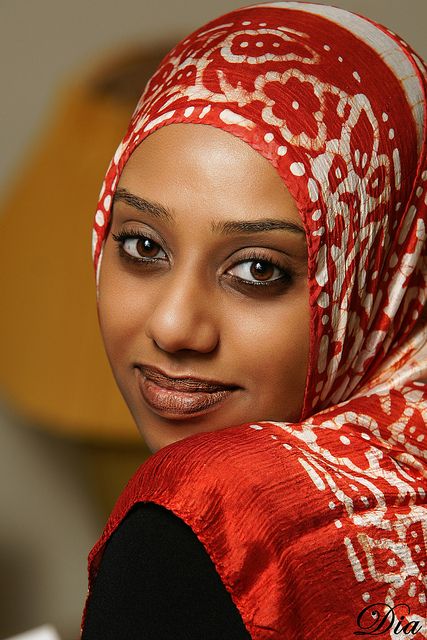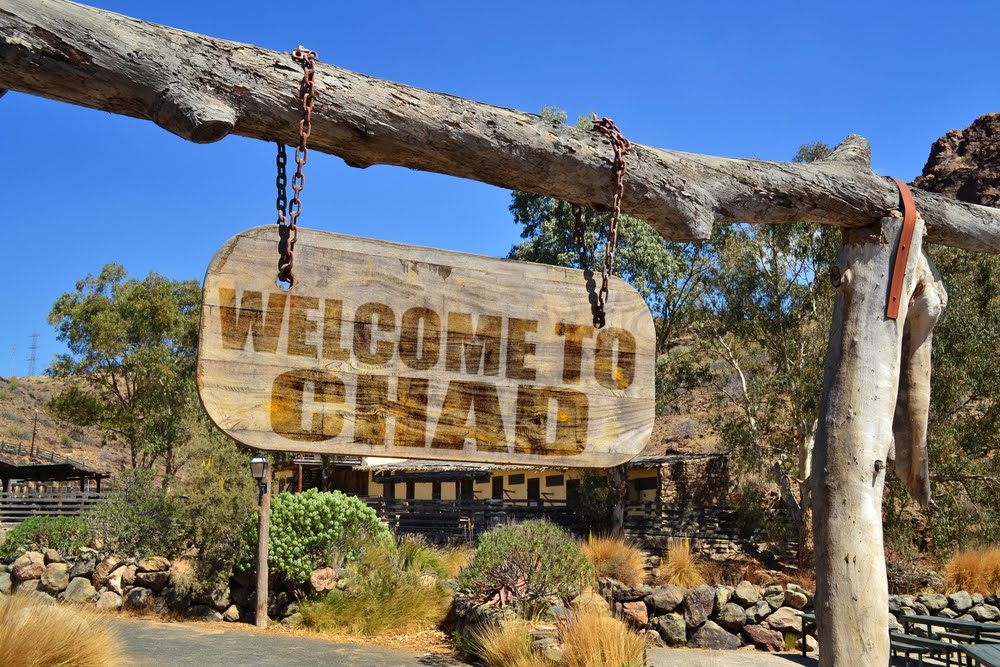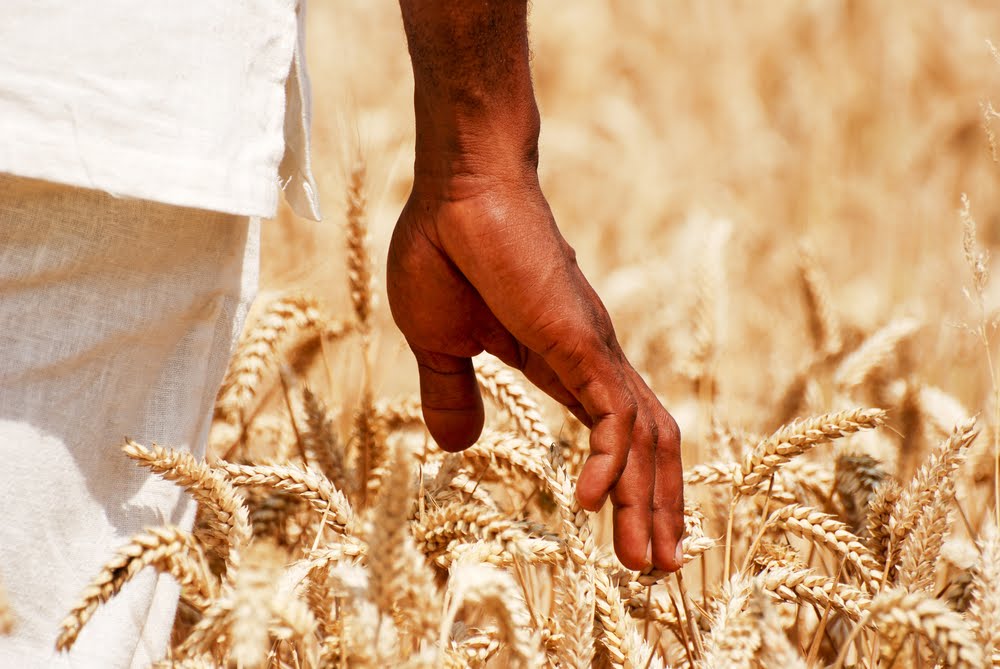The name Chad is derived from the designation
of the great Lake Chad, originally called Kuri by the sixteenth century author
and Imam; Ibn Fortu. Fondly referred to as ‘Toumai’ which means “hope of life”
in the local Dazaga language, Chad is the host country of Sahelanthropus tchadensis, an
extinct hominine species that existed about 7 million years ago, possibly very
close to the time of the chimpanzee and human divergence. It is believed to be
the oldest known human ancestor after the split of the human line from the
chimpanzee.
of the great Lake Chad, originally called Kuri by the sixteenth century author
and Imam; Ibn Fortu. Fondly referred to as ‘Toumai’ which means “hope of life”
in the local Dazaga language, Chad is the host country of Sahelanthropus tchadensis, an
extinct hominine species that existed about 7 million years ago, possibly very
close to the time of the chimpanzee and human divergence. It is believed to be
the oldest known human ancestor after the split of the human line from the
chimpanzee.
Chad has a northern part inhabited by an
Islamic (and partly Arabic-speaking) population of pastoralist semi desert
peoples, and a Southern part of Christians and traditional religious people,
engaged in mixed agriculture, crafts, and trade.
Islamic (and partly Arabic-speaking) population of pastoralist semi desert
peoples, and a Southern part of Christians and traditional religious people,
engaged in mixed agriculture, crafts, and trade.
GEOGRAPHY
Located in Central Africa, south of Libya, Chad is a
landlocked country, bordered by Sudan, the Central African Republic, Cameroon,
Nigeria, Niger, and Libya. It has an area of 495,752 square miles (1,284,000
square kilometres), most of it desert, semi-desert, or savannah.
landlocked country, bordered by Sudan, the Central African Republic, Cameroon,
Nigeria, Niger, and Libya. It has an area of 495,752 square miles (1,284,000
square kilometres), most of it desert, semi-desert, or savannah.
In the extreme south, there are lush
forests and agricultural areas. The country is divided into three climatic-ecological
zones from north to south: the Saharan zone (dry and hot, with livestock
raising, minor cultivation, and some trade), the Sahelian zone (more rainfall,
livestock raising, and cereal cultivation), and the Southern semitropical zone
(with good rainfall of up to 48 inches; 1,200 millimetres per year, large-scale
cultivation, cash-crop production, trade, and crafts).
forests and agricultural areas. The country is divided into three climatic-ecological
zones from north to south: the Saharan zone (dry and hot, with livestock
raising, minor cultivation, and some trade), the Sahelian zone (more rainfall,
livestock raising, and cereal cultivation), and the Southern semitropical zone
(with good rainfall of up to 48 inches; 1,200 millimetres per year, large-scale
cultivation, cash-crop production, trade, and crafts).
The country is drought-prone and suffers
from periodic famine. Chad is basically a large plain, with some mountain
ranges, including the Guéra massif in the centre and the Ouaddaï or Ennedi
massif in the East; in the North in the middle of the desert lies the
spectacular Tibesti range, where cultivation is possible due to higher
rainfall. In the Southwest, on the border with Cameroon, Niger, and Nigeria, is
Lake Chad, a shrinking water mass lying at an altitude of about 790 feet (240
meters).
from periodic famine. Chad is basically a large plain, with some mountain
ranges, including the Guéra massif in the centre and the Ouaddaï or Ennedi
massif in the East; in the North in the middle of the desert lies the
spectacular Tibesti range, where cultivation is possible due to higher
rainfall. In the Southwest, on the border with Cameroon, Niger, and Nigeria, is
Lake Chad, a shrinking water mass lying at an altitude of about 790 feet (240
meters).
The two main rivers — the Logon and the
Chari — are in the Southwest of Chad and run into Lake Chad. They are navigable
for most of the year and are also used extensively for fishing.
Chari — are in the Southwest of Chad and run into Lake Chad. They are navigable
for most of the year and are also used extensively for fishing.
The main Natural resources of Chad
include; petroleum, uranium, natron, kaolin, fish (Lake Chad),
gold, limestone, sand, gravel and salt.
PEOPLE AND SOCIETY
Source: Flickr.com
Chad has an estimated population of 11,193,452 (July 2013). The fertile Southern part of the country
has a population density of 77.7 per square mile. There are about 180 ethnic
groups in Chad (although their boundaries are often hard to establish).
has a population density of 77.7 per square mile. There are about 180 ethnic
groups in Chad (although their boundaries are often hard to establish).
The
largest are the Sara (approximately 32% of the total population), the Arabs (22%),
the Maba, the Tubu, and the Mbum. Many of the ethnic groups are also found in neighbouring
countries such as Cameroon, Niger, the Sudan, and Nigeria, having been
separated by the colonial and postcolonial boundaries. Most Chadians live in
rural areas. Urban centres include the capital N’Djamena (approx. 800,000
people, most of them now Arabs or Arabic-speaking), Sarh (120,000), Moundou
(110,000), Bongor, Abéché, and Doba. Life expectancy is approximately
forty-eight years.
largest are the Sara (approximately 32% of the total population), the Arabs (22%),
the Maba, the Tubu, and the Mbum. Many of the ethnic groups are also found in neighbouring
countries such as Cameroon, Niger, the Sudan, and Nigeria, having been
separated by the colonial and postcolonial boundaries. Most Chadians live in
rural areas. Urban centres include the capital N’Djamena (approx. 800,000
people, most of them now Arabs or Arabic-speaking), Sarh (120,000), Moundou
(110,000), Bongor, Abéché, and Doba. Life expectancy is approximately
forty-eight years.
The main
languages spoken in Chad are French (official), Arabic (official), Sara (in the
South), and more than 120 different languages and dialects.
languages spoken in Chad are French (official), Arabic (official), Sara (in the
South), and more than 120 different languages and dialects.
According to the 1993 census in Chad, Muslims
constitute about 53.1% of the population, Catholics 20.1%, Protestants 14.2%,
animists 7.3%, atheists and others 5.3%
constitute about 53.1% of the population, Catholics 20.1%, Protestants 14.2%,
animists 7.3%, atheists and others 5.3%
ECONOMY
Oil and agriculture drive Chad’s economy.
About 80% of Chad’s population rely on subsistence farming and livestock-raising
for their livelihood, with crude oil exports providing the bulk of export
revenues. Cotton, cattle, and gum arabic provide the bulk of Chad’s non-oil
export earnings. Other agricultural products include; sorghum, millet, peanuts,
rice, potatoes, manioc (tapioca); sheep, goats and camels.
About 80% of Chad’s population rely on subsistence farming and livestock-raising
for their livelihood, with crude oil exports providing the bulk of export
revenues. Cotton, cattle, and gum arabic provide the bulk of Chad’s non-oil
export earnings. Other agricultural products include; sorghum, millet, peanuts,
rice, potatoes, manioc (tapioca); sheep, goats and camels.
Remittances have also been an important source
of income and Chad relies on foreign assistance and capital for most public and
private sector investment. Oil production came on stream in late 2003 and crude
exports began in 2004. The economy, which grew an estimated 3.4% in 2013, is
expected to surge 11.2% in 2014, as new oilfields begin production. Inflation began falling in 2012 and stood at 4%
in 2013.
of income and Chad relies on foreign assistance and capital for most public and
private sector investment. Oil production came on stream in late 2003 and crude
exports began in 2004. The economy, which grew an estimated 3.4% in 2013, is
expected to surge 11.2% in 2014, as new oilfields begin production. Inflation began falling in 2012 and stood at 4%
in 2013.
The main industries in Chad are involved
in the production of oil, cotton textiles, meatpacking, brewing, natron (sodium
carbonate), soap, cigarettes, construction materials.
in the production of oil, cotton textiles, meatpacking, brewing, natron (sodium
carbonate), soap, cigarettes, construction materials.
CULTURE
Chad is ethnically diverse. Within the
country’s borders one may distinguish several national cultures that are based
on the ethno regional and religious affiliations of the population groups. Many
of the cultures can be traced back to a complex pre-colonial history of
competing indigenous states and sultanates. The various ethnic groups in Chad include; Sara, Arab,
Mayo-Kebbi, Kanem-Bornou, Ouaddai, Hadjarai, Tandjile, Gorane,
Fitri-Batha, others 6.7%.
country’s borders one may distinguish several national cultures that are based
on the ethno regional and religious affiliations of the population groups. Many
of the cultures can be traced back to a complex pre-colonial history of
competing indigenous states and sultanates. The various ethnic groups in Chad include; Sara, Arab,
Mayo-Kebbi, Kanem-Bornou, Ouaddai, Hadjarai, Tandjile, Gorane,
Fitri-Batha, others 6.7%.
However, traditional Chadian society in
all its ethnic and religious variety and complexity is not well-known to the
outside world. Little recent field research has been done in either the
countryside or the urban areas on the various societies and diverse ethno
cultural traditions.
all its ethnic and religious variety and complexity is not well-known to the
outside world. Little recent field research has been done in either the
countryside or the urban areas on the various societies and diverse ethno
cultural traditions.



























